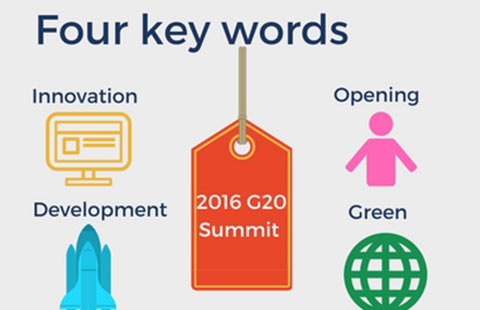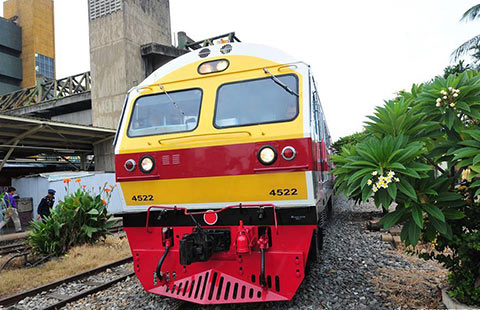China carrying forward inclusive growth
(Xinhua) Updated: 2016-08-31 09:23BEIJING - In the lead up to the G20 summit in Hangzhou, which will run from Sept 4 to 5, there are few phrases being bandied around as much as "inclusive growth."
Those keen to explore the concept's potential to elevate slow, uneven growth and benefit every section of society, however, need look no further than China.
"Through our projects with Myanmar - ranging from roads to canals, from medical services to education - we hope to share the benefits of China's growth," said Cui Yi, who manages a large joint venture project in Myanmar with Guangdong Zhenrong Energy Co Ltd.
The Chinese firm is constructing a 5-million-ton annual capacity oil refinery, an oil wharf and roads in Myanmar's southernmost region of Tanintharyi.
At the same time, the company is also involved in social, community and outreach programs, and is especially proud of its relationships with the citizens of Tanintharyi.
This cooperation with Myanmar is just one example of China's commitment to inclusive growth strategies with its economic partners.
The theme of the Hangzhou summit - "Toward an Innovative, Invigorated, Interconnected and Inclusive World Economy" - features inclusive growth along side a suite of other concepts that could alleviate the burdens of the current economic climate.
"Inclusive and interconnected development is expected to be a highlight of the summit," Foreign Ministry spokesperson Lu Kang said Friday, adding that this term refers to both the path and pattern of growth, spanning market access, regulatory environments and resources, among others.
During the summit, China is expected to present a cooperation proposal for Africa and lesser developed countries that will support industrialization, poverty reduction and sustainable development; the essential elements needed for successful growth.
To that end, the China-initiated Asian Infrastructure Investment Bank (AIIB) and the Belt and Road Initiative will provide cooperation platforms for G20 members to pursue inclusive development, said Zhang Yongjun, an economist with the China Center for International Economic Exchanges.
Launched in late 2013, the Belt and Road Initiative is an umbrella term for the land-based Silk Road Economic Belt and the 21st Century Maritime Silk Road. It will be a trade and infrastructure network connecting Asia with Europe and Africa, along the ancient trade routes.
Another case in point, Huajian Group, one of China's leading shoe manufacturers, broke ground on a 126-hectare industrial park in Ethiopia in April 2015, which will cost 3.2 billion yuan (about $480 million) to build. The industrial park could generate 30,000 local jobs when it is finished by 2020.
The shoe firm's Ethiopian subsidiary began production in 2012 and now employs more than 4,000 locals, generating more than $3 million in foreign exchange through exports for the northeast African country's coffers.
Moreover, Huajian recruited 200 Ethiopian university graduates this year and enrolled them on vocational training courses in China.
So far, 34 countries and international organizations have signed inter-governmental cooperation agreements with China on Belt and Road projects, while more than 70 countries and organizations have expressed their support or willingness to join -- sowing the seeds for an international cooperation framework with extensive influence.
For growth to be inclusive, productivity must improve, thus, China has been pushing to create opportunities for investment and employment through the implementation of the initiative. In late 2014, for example, the country established the Silk Road Fund, with first-phase capital of $10 billion.
The Silk Road Fund and the AIIB, which was founded on Dec 25, 2015, are crucial tools that will help level the playing field in Asia so that investment is channeled toward connectivity and infrastructure development.
"The AIIB with its capital of $100 billion, China's Belt and Road Initiative, and the ADB provide much needed capital that will fund energy, power, transport and telecommunications infrastructure in Asia," Cambodian Transport Minister Sun Chanthol said Monday during an ASEAN meeting in Cambodia.
From January to July, China's non-financial outbound direct investment (ODI) soared to 673.24 billion yuan, a 61.8 percent year-on-year increase, data from the Ministry of Commerce showed.
By the end of July, China's accumulated investment under the Belt and Road Initiative hit $51.1 billion, or 12 percent of the country's total ODI.
"Despite all the hand-wringing over the vaunted China slowdown, the Chinese economy remains the single largest contributor to world GDP growth," said Stephen S. Roach, a senior fellow at Yale University's Jackson Institute of Global Affairs and former chairman of Morgan Stanley Asia, in an op-ed published Monday.
If China posts GDP growth of 6.7 percent in 2016 - in line with the government's official target and only slightly above the International Monetary Fund's latest prediction of 6.6 percent - China would account for 1.2 percentage points of world GDP growth.
That share dwarfs the contribution of other major economies, such as the projected 0.3 percentage points contribution made by the United States, said Roach.
"For a global economy limping along at stall speed - and most likely unable to withstand a significant shock without toppling into renewed recession - that contribution is all the more important," he said.
- China to streamline procedures for withdrawing housing provident funds
- Welcome to beautiful Hangzhou
- National projects aimed to help revive China's rust belt
- Leading Chinese shipbuilder profits slump in first half year
- Top 10 Chinese private enterprises in 2016
- Scenery of West Lake in E China's Zhejiang
- China to build 40 manufacturing innovation centers by 2025
- Stock connect to start in November

















